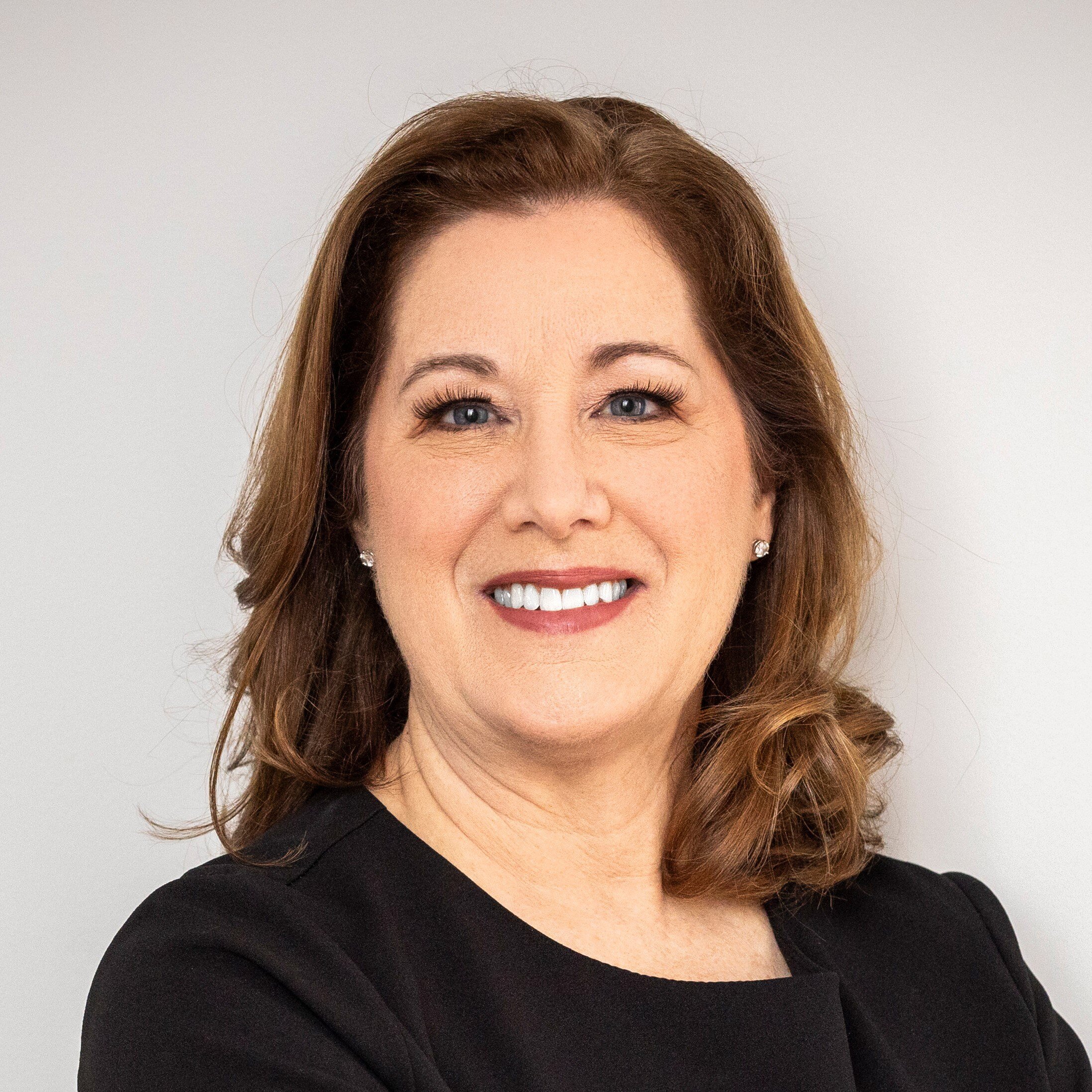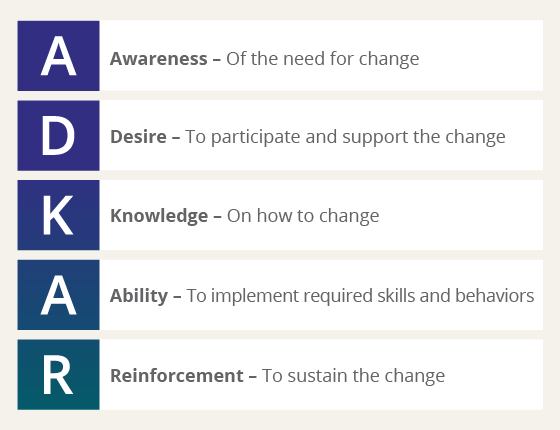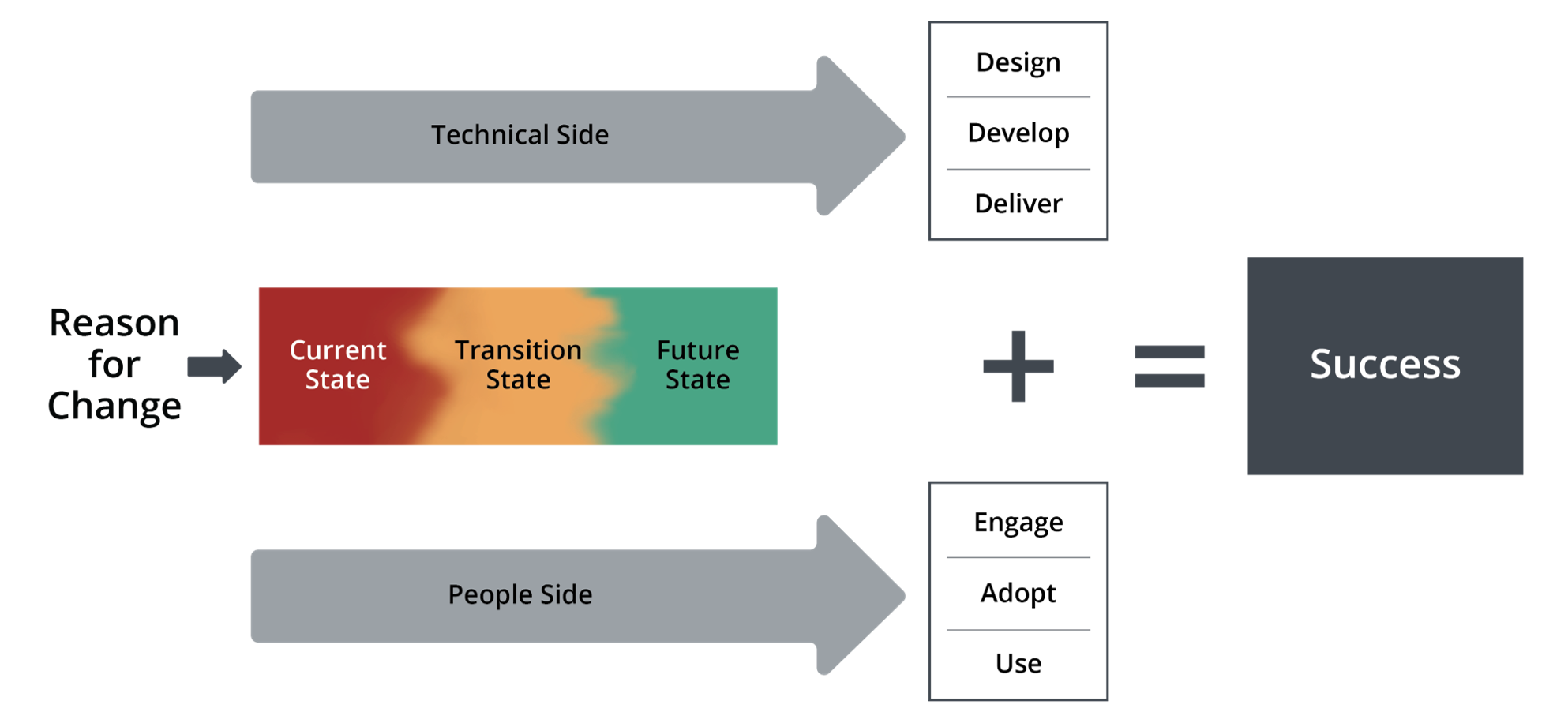4 Frequently Asked Questions at Change Management Certification

5 Mins
Updated: August 7, 2024
Published: June 16, 2021

How can I be the best change management practitioner I can be? This is the question that motivates change professionals at all stages of their careers to attend Prosci's Change Management Certification Program. But even well-equipped and well-prepared practitioners face challenges when the real work begins. These are the most common challenges they face and the questions they ask.
Change Management Certification FAQs
Since 1994, Prosci has been preparing and equipping clients and organizations around the world to help their people thrive through change. Drawing on these experiences and our research in change management best practices, we guide program participants during and after certification, so they can grow their skills and help their organizations achieve better outcomes from change.
Of course, certification is just the beginning of the journey to help others thrive through change. Challenges naturally arise. Whether we're delivering enterprise training programs to organizations or our virtual and in-person Change Management Certification Programs, these four questions about succeeding in change management always come up:
1. Where do I start after completing Prosci Change Management Certification?
Our flagship offering is the three-day Prosci Change Management Certification Program. Participants may be new to the change management discipline. Some have worked in change management but want a structured approach for managing the people side of change. Some are preparing for must-win projects in their organizations, while others are helping their organizations build enterprise change management capability.
During the program, participants learn and apply the research, models and tools that comprise the Prosci Methodology. Each program attendee brings with them a specific project they're working on for their organization, develops a change management strategy, and delivers a presentation on their strategy. But after the program ends, participants may hesitate or struggle to apply these classroom experiences to projects in the real world. What then?
The answer:
Don't wait for the perfect scenario to get started on a project. Get your feet wet by applying your skills right away. Identify a single project you want to use as a "demonstration project," which may or may not be the one you brought to class. Ideally, it's a project you're engaged in or leading, and you have an opportunity to embed change management early in the project lifecycle.
Start to work through the Prosci Methodology, including the Prosci Change Triangle (PCT) and Prosci 3-Phase Process, and use Proxima and other tools in the Prosci Hub Solution Suite to guide your approach. As you work through the stages of Phase 1 – Prepare Approach, highlight any information you don’t know, and identify who in your organization you will work with to get it. This will help you understand the "lay of the land" and create the situational awareness needed for planning and acting throughout Phase 2 – Manage Change.
Don’t try to do everything. Start where you feel comfortable applying your skills and demonstrating the value of change management. This alone is an important step toward Awareness and Desire to follow a structured change management methodology on projects.

The Prosci ADKAR Model
2. How do I get my busy sponsor to devote time to being active and visible?
Prosci’s Best Practices in Change Management research is the largest body of knowledge on the subject of change management, comprising more than 12 benchmarking studies over more than two decades. The research consistently shows that active and visible sponsorship is the number one indicator of change success. Although the discipline of change management has changed over the last two decades, the importance of the leader’s role in change remains paramount.
The answer:
Getting your sponsor to be more active and visible starts with effectively communicating the value of change management. The value comes from achieving the expected return on investment (ROI) from projects or change initiatives. Change management is the structured discipline that enables impacted people to move successfully through their individual change journeys—so they can adopt and use the change in their daily work and so your organization can capture the people-dependent portion of the ROI.
Once you effectively communicate the value of change management in terms that resonate with leaders, you can then focus on engaging, preparing and equipping them to be effective sponsors of the change. Don't forget that being an effective sponsor is a change for leaders who are new to change management. You must connect project success to effective sponsorship (Awareness and Desire), prepare and equip them for their role (Knowledge and Ability), and help them fulfill their role (Ability and Reinforcement).
As you go through this process, identify a few key sponsor actions that will have the biggest impact. Keep it simple, and be very specific about what you want your sponsor to do. Perform your change-enabling role as a practitioner by doing as much preparation as possible for them. And make sure they have the opportunity to experience the positive impacts of their efforts first hand. This reinforces their active and visible behavior while encouraging them to advocate for change management when you need to influence others, especially reluctant sponsors in your organization.
3. How do I get project managers on board
with starting change management earlier?
Prosci’s research clearly shows the value of starting change management activities at the initiation of a project. In fact, 85% of research participants said they should start change management activities at project initiation but only 40% actually did. Respondents also reported that having a qualified change management professional or team on the project would help participants anticipate obstacles and develop backup plans, eliminating rework later in the change process.
Engaging in change management earlier garners more support from employees and helps them better prepare for the change. Starting earlier also correlates with the percent of study participants who met or exceeded project objectives as a result. So, why is it so difficult to get project managers to start change management earlier—or to do change management at all?
The answer:
Many project managers believe that change management will add time, resources and cost to the project. They may perceive change management as "touchy-feely" and nice to have but not essential. Some project managers may feel like you're pushing your own agenda or getting in the way of meeting project deadlines or budgets. Your challenge is to align what you care about with what they care about: realizing successful outcomes from projects and initiatives.
To get a project manager's attention, you must demonstrate through data and practical experience that you are working toward the same outcomes. You must show that designing, developing and delivering a change while enhancing adoption and usage from the outset will improve outcomes and drive benefits realization.

Prosci's Unified Value Proposition
You may also need to engage your primary sponsor to work with the project manager’s supervisor to help them understand that embedding change management is a change to the way projects are managed. Be flexible with your project manager. Take what they will give you initially until you can demonstrate value.
If you are responsible for being both the project manager and the change manager, you have control over timeframes but a different challenge to address. You need to wear both hats—for the technical side and the people side of the change. You will be pulled in many directions. To keep your priorities straight, always remember why you are doing what you're doing. You are there to support, equip and enable people through the change process, so they can adopt and use the change in their daily work, which leads to the desired results and outcomes.
4. If I could only do one thing, what would you recommend?
Whether you are in an unreceptive environment or one that welcomes change management as a means to drive organizational improvement, your relationships with specific individuals in your organization are critical. In the context of your project, you must identify the organizational influencers and subject matter experts you need to connect with.
If possible, connect with the primary sponsor directly. If you don't have direct access, work with and through others to engage with the sponsor. Spend time with the project manager. Create opportunities to align their interests with realizing organizational goals and objectives. Understand your communications and training options and resources. Learn how to build the people manager and supervisor competencies necessary for successful change. Own your change practitioner or change leadership role as one that really matters, even if it is not your formal title.
Your Global Partner For Change Success
Getting started with your first project can be intimidating, especially when a project's success is critically important to your organization. But even small steps can move you in the right direction. Start by demonstrating the value of change management in terms that resonate with senior leaders, and then get to work. If your projects and initiatives still feel too big or complex, or if you're experiencing roadblocks, Prosci can support you and your teams with coaching, skill-building, and even extra hands.


